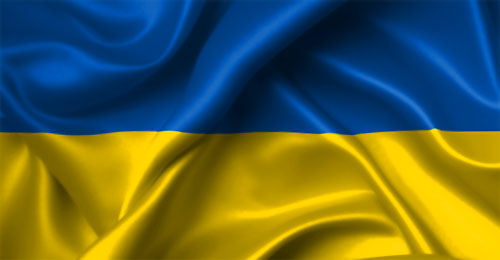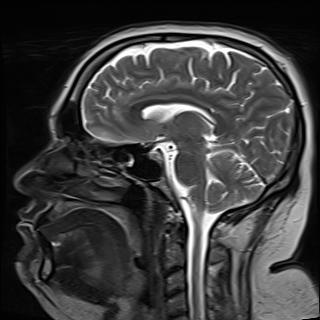There have been a number of Scientific discoveries that seemed to be purely scientific curiosities that later turned out to be incredibly useful. Hertz famously commented about the discovery of radio waves: “I do not think that the wireless waves I have discovered will have any practical application.”
Are there examples like this in math as well? What is the most interesting “pure math” discovery that proved to be useful in solving a real-world problem?
Non-Euclidean geometry was developed by pure mathematicians who were trying to prove the parallel line postulate as a theorem. They realized that all of the classic geometry theorems are all different if you start changing that postulate.
This led to Riemannian geometry in 1854, which back then was a pure math exercise.
Some 60 years later, in 1915, Albert Einstein published the theory of general relativity, of which the core mathematics is all Riemannian geometry.
This won’t make any sense to any of you right now, but: E = md3

That’s a perfect example of a typical interaction between a Technology Management Consultant and somebody from a STEM area.
Techies with an Engineering background who are in Tech and Tech-adjacent companies are often in the receiving end of similar techno-bollocks which makes no sense from such “Technology” Management Consultants, but it’s seldom quite as public as this one.
Oh god, the cringe.
The math fun fact I remember best from college is that Charles Boole invented Boolean algebra for his doctoral thesis and his goal was to create a branch of mathematics that was useless. For those not familiar with boolean algebra it works by using logic gates with 1s and 0s to determine a final 1 or 0 state and is subsequently the basis for all modern digital computing
George Boole introduced Boolean algebra, not Charles. Charles, according to this site on the Boole family, he had a career in management of a mining company.
Man, I’ve had the wrong Boole in my head this whole time? Guess I have a 0 somewhere that I should have a 1
This is such a fucking cheeky pun I cannot even be mad at it.
Shoutout to Satyendra Nath Bose who helped pioneer relativity as a theoretical physicist because he didn’t want to study something useful that would benefit the British.
Same thing with early studies on prime numbers
Was he trying to dunk on his professors?
Yes and no
So no.
But also yes
I work with a guy who is a math whiz and loves to talk. Yesterday while I was invoicing clients, he was telling me how origami is much more effective for solving geometry than a compass and a straight edge.
I’ll ask him this question.
My disclaimer: I don’t know what any of this means, but it might give you a direction to start your research.
First thing he came up with is Number Theory, and how they’ve been working on that for centuries, but they never would have imagined that it would be the basis of modern encryption. Multiplying a HUGE prime number with any other numbers is incredibly easy, but factoring the result into those same numbers is near impossible (within reasonable time constraints.)
He said something about knot theory and bacterial proteins, but it was too far above my head to even try to relay how that’s relevant.
Tell him I would like to subscribe to his blog
The following aren’t necessarily answers to your question, but he also mentioned these, and they are way too funny to not share:
The Hairy Ball theorem
Cox Ring
Tits Alternative
Wiener Measure
The Cox-Zucker machine (although this was in the 70s and it’s rumored that Cox did most of the work and chose his partner ONLY for the name. 😂)
Based Cox.
I am pretty sure that the first thing you mentioned (multiplying being easy and factoring being hard) is the basis of public key cryptography which is how HTTPS works.
Somewhat related fun fact: One of the most concrete applications for quantum computers so far is breaking some encryption algorithms.
Origami can be used as a basis for geometry:
http://origametry.net/omfiles/geoconst.html
IIRC, you can do things that are impossible in standard Euclidean construction, such as squaring the circle. It also has more axioms than Euclidean construction, so maybe it’s not a completely fair comparison.
Does this count? Because it really is wtf.
Doom absolutely counts!
Quake, not Doom. Doom didn’t use true 3D rendering and had almost no dynamic lighting.
Oops. I thought that weird approximated constant was somewhere in the doom sources… Thanks I guess for correcting me.
Here’s some math-related Doom content for you: John Romero accidentally coded in the wrong digit of pi in the 10th position, and this guy explores how the game rendering changes when pi is increasingly wrong
The exact example I also thought of from the question! Well done
Don’t put that cursed shit on mathematicians, lol.
A brain teaser about visiting all islands connected by bridges without crossing the same bridge twice is now the basis of all internet routing. (Graph theory)
freaking freaky little Russian outpost that one is. Bridges galore
It’s imaginary numbers. Full stop. No debate about it. The idea of them is so wild that they were literally named imaginary numbers to demonstrate how silly they were, and yet they can be used to describe real things in nature.
I’m studying EE in university, and have been surprised by just how much imaginary numbers are used
EE is absolutely fascinating for applications of calculus in general.
I didn’t give a shit about calculus and then EE just kept blowing my mind.
I was gonna ask how imaginary numbers are often used but then you reminded me of EE applications and that’s totally true.
From what I’ve seen that’s one example where you could totally just use trig and pairs of numbers, though. I might be missing something, because I’m not an electrical engineer.
You can, they map, but complex numbers are much much easier to deal with
In quantum mechanics, there are times you divide two different complex numbers, and complex multiplication/division is the thing two real numbers can’t really replicate. That’s how the Bloch 2-sphere in 3D space is constructed from two complex dimensions (which maps to 4 real ones).
It’s peripheral, though. Nothing in the guts of the theory needs it AFAIK - the Bloch sphere doesn’t generalise much and is more of a visualisation. So, jury’s still out on if it’s us or if it’s nature that likes seeing it that way.
I mean, quaternions are the weirder version of complex numbers, and they’re used for calculating 3D rotations in a lot of production code.
There’s also the octonions and (much inferior) Clifford algebras beyond that, but I don’t know about applications.
Yeah but aren’t quaternions basically just a weird subgroup of 2x2 complex matrices?
Would that make it less true? Complex numbers can be seen as a weird subgroup of the 2x2 real matrices. (And you can “stack” the two representations to get 4x4 real quaternions)
Furthermore, octonions are non-associative, and so can’t be a subgroup of anything (although you can do a similar thing using an alternate matrix multiplication rule). They still show up in a lot of the same pure math contexts, though.
I just think complex vector spaces are a great place to stop your abstraction
Stopping while we’re ahead? Never!
/s, but also I’m sort of in this picture.
Well who wants constraints anyway? The most inconvenient constraints in the wrong place can make certain things much more complicated to deal with… Now a nice, sensible normal Hilbert space, isn’t that lovely?
I don’t really get 'em. It seems like people often use them as “a pair of numbers.” So why not just use a pair of numbers then?
They also have a defined multiplication operation consistent with how it works on ordinary numbers. And it’s not just multiplying each number separately.
A lot of math works better on them. For example, all n-degree polynomials have exactly n roots, and all smooth complex functions have a polynomial approximation at every point. Neither is true on the reals.
Quantum mechanics could possibly work with pairs of real numbers, but it would be unclear what each one means on their own. Treating a probability amplitude as a single number is more satisfying in a lot of ways.
That they don’t exist is still a position you could take, but so is the opposite.
I totally get your point, and sometimes it seems like that. Why not just use a coordinate system? Because in some applications the complex roots of equations is relevant.
If you square an imaginary number, it’s no longer an imaginary number. Now it’s a real number! That’s not something you can accomplish with something like a pair of numbers alone.
Because the second number has special rules and a unit. It’s not just a pair of numbers, though it can be represented through a pair of numbers (really helpful for computing).
IIRC quaternions were considered pretty useless until we started doing 3D stuff on computers and now they’re used everywhere
This talk by Freya Holmer on Quarternions is awesome and worth anybody’s time that like computer graphics, computer science, or just math.
That was a cool watch. Thanks.
I wonder if complex numbers predate the discovery of electromagnetism
Yes, mathematicians first encountered equations which could only be solved with complex numbers in the 16th century.
Complex numbers. Also known as imaginary numbers. The imaginary number
iis the solution to√-1. And it is really used in quantum mechanics and I think general relativity as well.It’s used extensively in electronic circuit design (where it’s called “j”, as "i’ already meant electronic current).
Also signal processing has i or j all over it.
I’m the akshually guy here, but complex numbers are the combination of a real number and an imaginary number. Agree with you, just being pedantic.
Sure, but 1 is a real number. 😜
Yes, and 1 is also a complex number.
Of course, but 1 is the loneliest number.
2 is as bad as 1: it’s the loneliest number since the number 1.
Electromagnetics as well.
A complex number is just two real numbers stitched together. It’s used in many areas, such as the Fourier transform which is common in computer science is often represented with complex numbers because it deals with waves and waves are two-dimensional, and so rather than needing two different equations you can represent it with a single equation where the two-dimensional behavior occurs on the complex-plane.
In principle you can always just split a complex number into two real numbers and carry on the calculation that way. In fact, if we couldn’t, then no one would use complex numbers, because computers can’t process imaginary numbers directly. Every computer program that deals with complex numbers, behind the scenes, is decomposing it into two real-valued floating point numbers.
That’s not quite accurate because the two numbers have a relationship with each other. i^2 = - 1, so any time you square a complex number or multiply two complex numbers, some of the value jumps from one dimension to the other.
It’s like a vector, where sure, certain operations can be treated as if the dimensions of the vector are distinct, like a translation or scale. But other operations can have one dimension affecting the other, like rotation.
uh… broski… you do realize a vector of two real numbers can be rotated… right? Please give me a single example for a supposed impossible operation to do on a vector of two real numbers that you can do on complex numbers. I can just define v² where v is a vector (a,b) as (a,b)²=(a²-b²,2ab). Okay, now I’ve succeeded in reproducing your supposedly mathematically impossible operation. Give me another one.
That’s like saying negative numbers or fractional numbers is just two while numbers stitched together because that’s how computers deal with it
Negative numbers are just real numbers with a symbol attached. Yes, that’s literally true. In computer code we only ever deal with 0s and 1s. We come up with a convention to represent negative numbers, they are still ultimately zeros and ones but we just say “zeros and ones in this form represent a negative number,” usually just by having the most significant bit 1. They are no physical negative numbers floating out there in the world like in a Platonic sense. What we call “negative” is contextual. It depends upon how we frame a problem and how we interpret a situation. You can lose money at a casino and say your earnings are now negative, or you can say your losses are now positive. Zeus isn’t going to strike you down for saying one over the other. There is nothing physically dictating what convention you use. You just use which convention you find most intuitive and mathematically convenient given the problem you’re trying to describe.
Yes, when we are talking about how computers work, we are talking about how numbers actually manifest in objective, physical reality. They are not some magical substance floating out there in the Platonic realm. Whenever we actually go to implement complex numbers or even negative in the real world, whenever we try to construct a physical system that replicates their behavior and can perform calculations on a physical level, we always just use unsigned real numbers (or natural numbers), and then later establish signage and complexity as conventions combined with a set of operations on how they should behave.
I’m not sure your point about fractional numbers. If you mean literally a/b, yes, there is software that treats a/b as just two natural numbers stitched together, but it’s actually a bit mathematically complicated to always keep things in fractional form, so that’s incredibly rare and you’d only see it in very specialized math software. Usually it’s represented with a floating point number. In a digital computer that number is an approximation as it’s ultimately digital, but I wouldn’t say that means only digital numbers are physical, because we can also construct analogue computers that can do useful computations and are not digital. Unless we discover that space is quantized and thus they were digital all along, then I do think it is meaningful to treat real numbers as, well, physically real, because we can physically implement them.
Talking about how numbers actually manifest in objective, physical reality - imaginary number appears in quantum hamiltonian, so maybe that’s more real?
And you can also just write it out using real numbers if you wish, it’s just more mathematically concise to use complex numbers. It’s a purely subjective, personal choice to choose to use complex-valued notation. You are trying to argue that making a personal, subjective, arbitrary choice somehow imposes something upon physical reality. It doesn’t. There isn’t anything wrong with the standard formulation, but it is a choice of convention, and conventions aren’t physical. If I describe my losses in a positive number, and then later change convention and describe my winnings with a negative number, the underlying physical reality has not changed, it’s not going to suddenly transmute into something else because of a change in convention in how I describe it.
The complex numbers in quantum theory are not magic. They are also popular in classical mechanics as well, and are just quite common in wave mechanics in general (classical or quantum). In classical wave mechanics, in classical computer science, we use the Fourier transform a lot which is typically expressed as a complex number. It’s because waves have two degrees of freedom, and so you could describe them using a vector of two real numbers, or you could describe them using complex numbers. People like the complex-valued notation because it’s more concise to write down and express formulas in, but at the end of the day it’s just a convention, a notation created by human beings which many other mathematically equivalent notations can describe the same exact thing.
Yeah, I agree it can all be mapped onto positive reals. How about zero? Would that be needed to be having a physical reality ?
We all have an intuitive grasp of 0, it’s just when you define what it looks like for something to change in a particular situation, i.e. you define what x>0 or x<0 looks like, and then x=0 is just when it hasn’t changed at all.
I feel like this discussion is getting too philosophical. My point isn’t that deep, it is just to keep complex numbers intuitive and tied to physical reality. We shouldn’t treat imaginary numbers like some out there, almost mystical thing we should just accept at face value. When we realize that they are mathematically equivalent to a set of operations on a vector of two real numbers, we can then get an intuitive understanding of what they actually represent in the real world. You can visualize a complex number as a vector representing on a plane (called the complex plane), and then visualize operations on the complex numbers as manipulations of that vector.
The Fourier transform has complex numbers in it. This isn’t mysterious, it’s just that the Fourier transform deals with waves, and waves are two-dimensional, so they need to be described by a vector of two numbers. The Fourier form effectively wraps the wave around a circle, and if the rate of wrapping is different from the wavelength of the wave, then every time you complete a revolution of the circle, you will either have overshot or undershot a complete cycle of the wave, causing your second wrapping to be off-center, and if you repeat this indefinitely, then all the off-center wrappings will cancel each other out, giving you 0 in the limit. But if the rate of wrapping is equivalent to the wavelength, then a revolution around the circle would exactly correspond to a cycle of the wave, so it would you would not get this cancelling and it would blow up to infinity in the limit.
You can get very intuitive mental images of what complex numbers are actually doing when you recognize this. There shouldn’t be a layer of mystery put on top of them. People often act like they are something so mysterious we just have to accept at face-value, and others will even justify this by pointing out that they’re used in quantum mechanics, and quantum theory is “weird,” therefore we should just accept this weird thing at face-value and not question it.
All I am trying to point out is that complex numbers are not “weird,” they have clear meaning you can visualize them and get an intuition for them, and the reason they show up in certain equations always has very good and intuitive explanations for it. I am not making a deep philosophical point here. I am only arguing against the notion of obfuscating the meaning of imaginary numbers. The term “imaginary” is honestly not a good name. Complex numbers probably should just be called 2D numbers, with the real and imaginary components called the X and Y component or something like that. They are just a way of concisely representing something that is two-dimensional. There are also quaternions which are 4D numbers.
I don’t think this is really an accurate way of thinking about them. Yes, they can be mapped to a 2d plane, so you can represent them with their two real-numbered coordinates along the real and imaginary axes, but certain operations with them (eg. multiplication) can be done easily with complex numbers but are not obvious how to carry out with just grid points. (3,4) * (5,6) isn’t well-defined, but (3+4i) * (5+6i) is.
I am having genuine difficulty imagining in your head how you think you made a point here. It seems you’re claiming that given if two vectors have the same symbols between them, they should have identical output, such as (a,b) * (c,d) should have the same mathematical definition as (a+bi) * (c+di), or complex numbers are not reducible to real numbers.
You realize mathematical symbols are just conventions, right? They were not handed down to us from Zeus almighty. They are entirely human creations. I can happily define the meaning of (a,b) * (c,d) to be (ac-bd,ad+bc) and now it is mathematically well-defined and gives identical results.
Right, but you need to specify that additional definition. Imaginary numbers are useful because they come pre-loaded with all those additional definitions about how to handle operations that use them.
I also find your hostile confusion unwarranted, given two other commenters have pointed out the same flaw in your argument that I have.
Because your arguments are just bizarre. Imaginary numbers do not have a priori definitions. Humans have to define imaginary number and define the mathematical operations on them. There is no “hostile confusion” or “flaw,” there is you making the equivalent of flat-earth arguments but for mathematics. You keep claiming things that are objectively false and so obviously false it is bizarre how anyone could even make such a claim. I do not even know how to approach it, how on earth do you come to believe that complex numbers have a priori definitions and they aren’t just humans defining them like any other mathematical operation? There are no pre-given definitions for complex numbers, their properties are all explicitly defined by human beings, and you can also define the properties on vectors. You at first claim that supposedly you can only do certain operations on complex numbers that you cannot on vectors, I point out this is obviously false and you can’t give a single counter-example, so now you switch to claiming somehow the operations on complex numbers are all “pre-given.” Makes zero sense. You have not pointed out a “flaw,” you just ramble and declare victory, throwing personal attacks calling me “confused” like this is some sort of competition or something when you have not even made a single coherent point. Attacking me and downvoting all my posts isn’t going to somehow going to prove that you cannot decompose any complex-valued operations into real numbers, nor is it going to prove that complex numbers somehow don’t have to have their properties and operations on them postulated just like real numbers.
I’m being combative because I don’t get how you don’t understand our argument, and because I view claims like “You keep claiming things that are objectively false” to be hostile when they stem from a misunderstanding rather than a fault on my part.
Let me restate my main point: complex numbers can be defined as vectors with the necessary rules to define various operations, such as multiplication over them and how they relate to sqrt(-1). Those additional rules are just as important to their definition as their appearance as two real-numbered values is. Both vectors and complex numbers are defined by humans, but we have chosen to give them separate definitions, because each definition includes the rules defining these operations and relationships, and they are different between the two types of mathematical object.
And, for the record, I downvoted your posts that were hostile (not all of them) and responded in kind. It’s a separate effort than trying to prove my point here.
What point is there to “prove”? Your argument now is just that we defined them differently therefore they are different. Which suggests a straw man to my original point as I never once implied or suggested that in mathematics, real and complex numbers don’t have different definitions, that’s not relevant to anything.
The invention of the number 0, the discovery of irrational numbers, or l the realization that base 60 math makes sense for anything round, including timekeeping.
60 was chosen by the Ancient Sumerians specifically because of its divisibility by 2, 3, 4, and 5. Today, 60 is considered a superior highly composite number but that bit of theory wouldn’t have been as important to the Sumerians and Babylonians as the simple ability to divide 60 by many commonly used factors (2, 3, 4, 5, 6, 10, 12, 15) without any remainders or fractions to worry about.
12 is the most based number in that respect IMO.
But then…hey, we use that for hours!
and in parts of the world for inches to a foot. pretty useful for carpentry for example
If I recall correctly, one mathematician in the 1800s solved a very difficult line integral, and the first application of it was in early computer speech synthesis.
the man you’re thinking of is, I believe, George Boole, the inventor of Boolean algebra.
As far as I know, matrices were a “pure math” thing when they were first discovered and seemed pretty useless. Then physicists discovered them and used them for all sorts of shit and now they’re one of the most important tools in in science, engineering and programming.
Huge in 3d graphics and AI.
Having watched all the veritasium math videos I feel like all the major breakthroughs in math were due to mathemicians playing around with numbers or brain teasers out of curiosity without a concrete use case in mind.
It’s crazy how engaging and well done Veritasium videos are and they’re just free to watch on YouTube.
And on spotify nowadays
Non-linear equations have entered the chat.
Chaos and non-linear dynamics were treated as a toy or curiosity for a pretty long time, probably in no small part due to the complexity involved. It’s almost certainly no accident that the first serious explorations of it after Poincare happen after the advent of computers.
So, one place where non-linear dynamics ended up having applications was in medicine. As I recall it from James Gleick’s book Chaos, inspired by recent discussion of Chaotic behavior in non-linear systems, medical doctors came up with the idea of electrical defibrillation- a way to reset the heart to a ground state and silence chaotic activity in lethal dysrhythmias that prevented the heart from functioning correctly.
Fractals also inspired some file compression algorithms, as I recall, and they also provide a useful means of estimating the perimeters of irregular shapes.
Also, there’s always work being done on turbulence, especially in the field of nuclear fusion as plasma turbulence seems to have a non-trivial impact on how efficiently a reactor can fuse plasma.
A good friend of mine from high school got his physics PhD at University of Texas and went on to work in the high energy plasma physics lab there with the Texas Petawatt laser, and a lot of the experiments it was used for involved plasma turbulence and determining what path energetic particles would take in a hypothetical fusion reactor.
Be honest, how many unofficial experiments were there?
You ever just start lasering shit for kicks?
Probably not as many as we’d like to think. I recently got to run a few days of tests at Lawrence Livermore National Labs with an absurdly massive laser. At one point we needed to bring in a small speaker for an audio test. It took the lab techs and managers about two hours and a couple phone calls to some higher ups to make sure it was ok and wouldn’t damage anything. There’s so much red tape and procedure in the way that I don’t think there’s an opportunity to just fuck around. The laser has irreplaceable parts that people aren’t willing to jeopardize. Newer or smaller lasers are going to be more relaxed. This one is old enough to be my father, and it’s LLNL’s second biggest single laser iirc. And they are the lab using lasers for fusion, so they have big lasers.
Reminds me of that scene from Ali G
I’ve read that all modern cryptography is based on an area (number theory?) that was once only considered “useful” for party tricks.
prime number factorization is the basis of assymetric cryptography. basically, if I start with two large prime numbers (DES was 56bit prime numbers iirc), and multiply them, then the only known solution to find the original prime numbers is guess-and-check. modern keys use 4096-bit keys, and there are more prime numbers in that space than there are particles in the universe. using known computation methods, there is no way to find these keys before the heat death of the universe.
DES is symmetric key cryptography. It doesn’t rely on the difficulty of factorizing large semi-primes. It did use a 56-bit key, though.
Public key cryptography (DSA, RSA, Elliptic Curve) does rely on these things and yes it’s a 4096-bit key these days (up from 1024 in the older days).
RSA mostly uses 4096 bit keys nowadays. DSA is no longer used (or shouldn’t be lol). Ed25519 uses 256 bit keys.
thank you
deleted by creator
I’d like to read up on this if you have sources
deleted by creator
Are you talking about the input-output thing? It assumes each sector produces exactly one thing, and is agnostic of growth, change and multiple non-equal possibilities existing. I’m skeptical.
It’s not really covered up, either.
That’s pretty interesting. Do you happen to have any introductory material to that topic?
I mean, it might even have applications outside of running a techno-communist nation state. For example, for designing economic simulation game mechanics.
deleted by creator
There’s no such thing as a Nobel Prize in economics. Economists got salty about this and came up with the Sveriges Riksbank Prize in Economic Sciences in Memory of Alfred Nobel, and rely on the media shortening it to something that gets confused with real Nobel Prizes.
deleted by creator
I mean, it’s endorsed by the same people. He has a page on their website and everything.
The same site says things like:
Between 1901 and 2024, the Nobel Prizes and the Sveriges Riksbank Prize in Economic Sciences in Memory of Alfred Nobel were awarded 627 times to 1,012 people and organisations.
which pretty clearly makes a distinction between the Nobel Prizes and the Sveriges Riksbank Prize in Economic Sciences in Memory of Alfred Nobel.
Yeah, you’re not wrong about the history. It just still seems like it counts.
It’s funny that you’re saying this is “actively suppressed” while not naming this field or providing links for further readings.
deleted by creator
The phrase “donut mathematics” was not in your earlier comment. You literally did not name it.
Maybe they’re scared that project Cybersyn would actually work
















